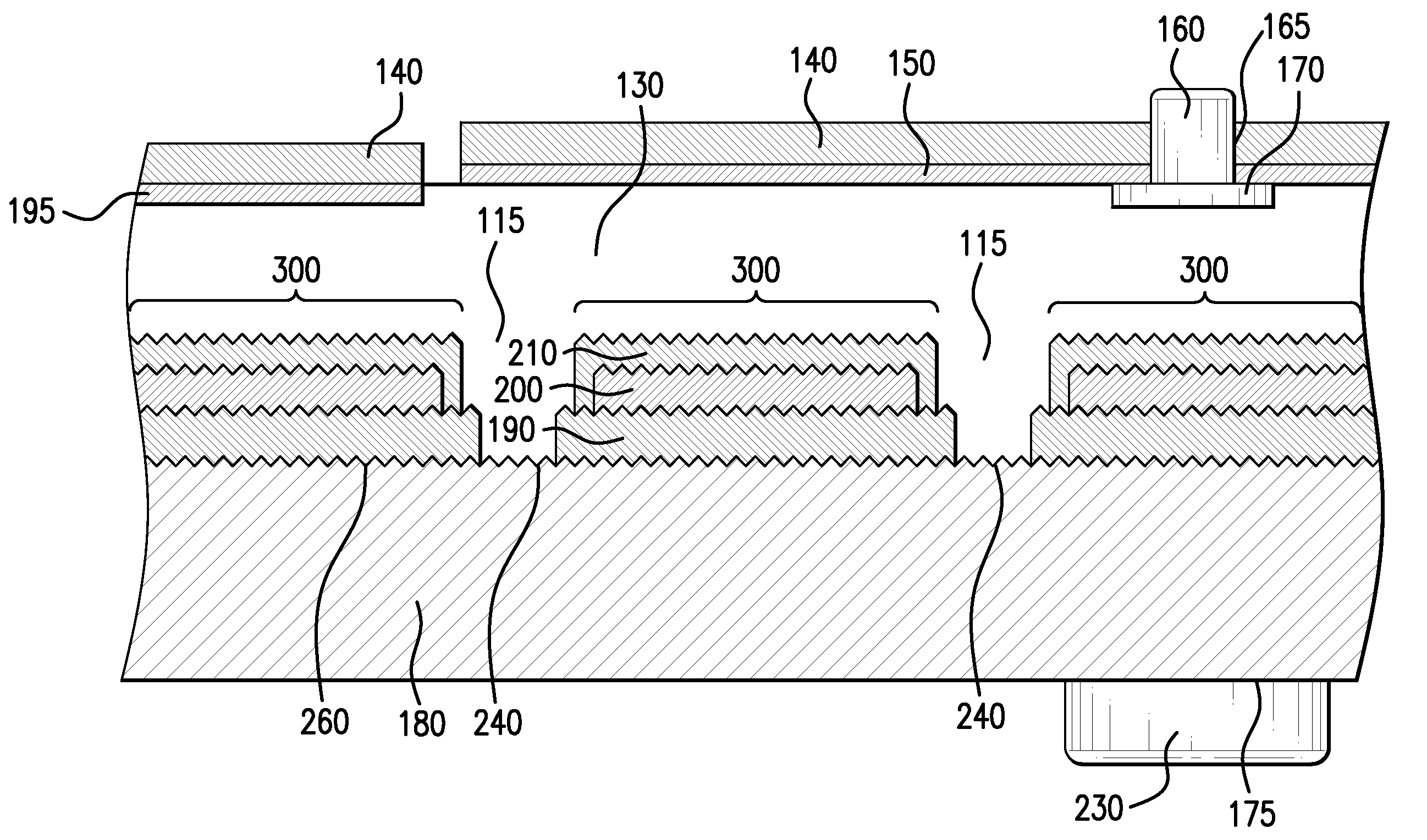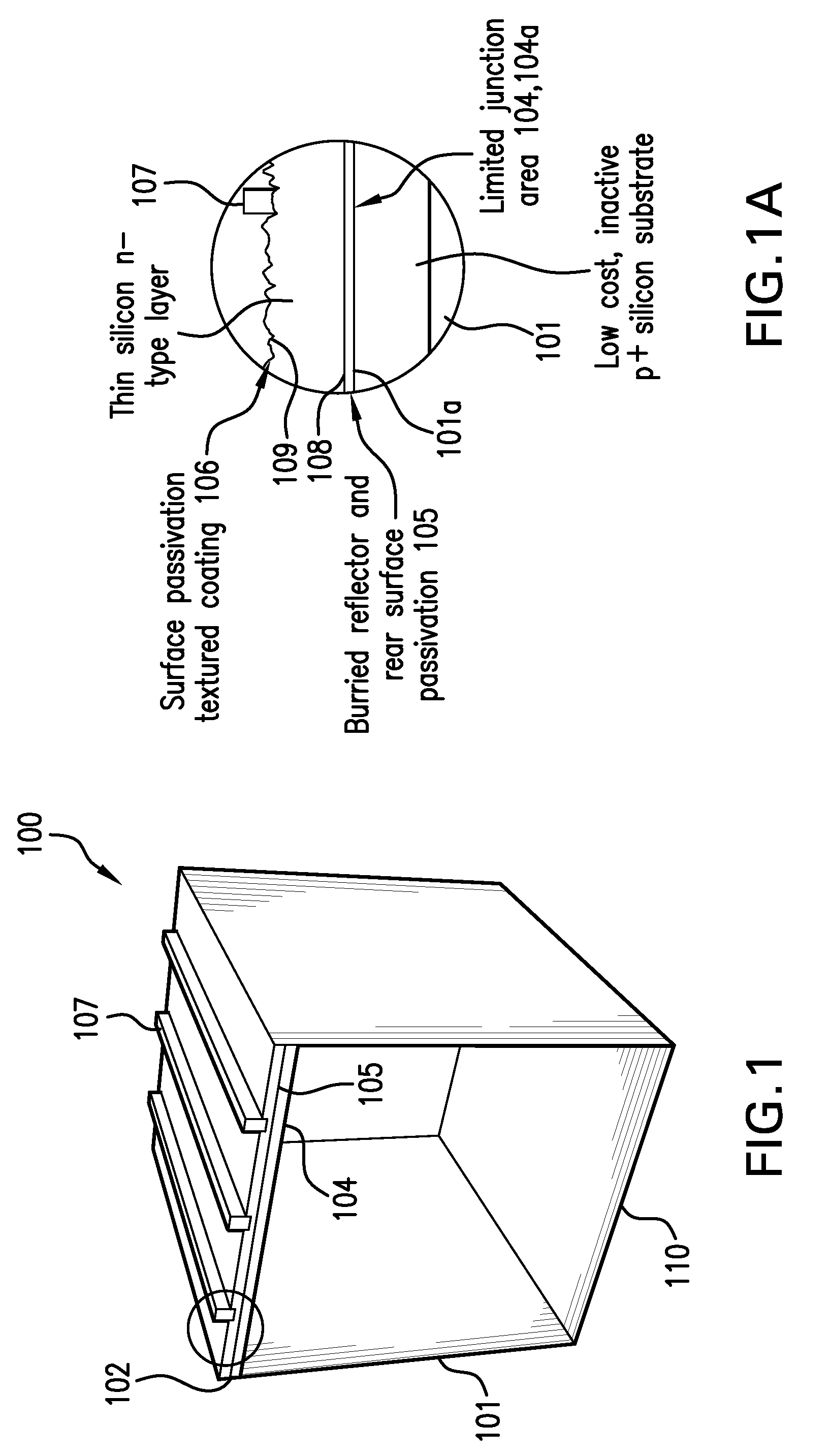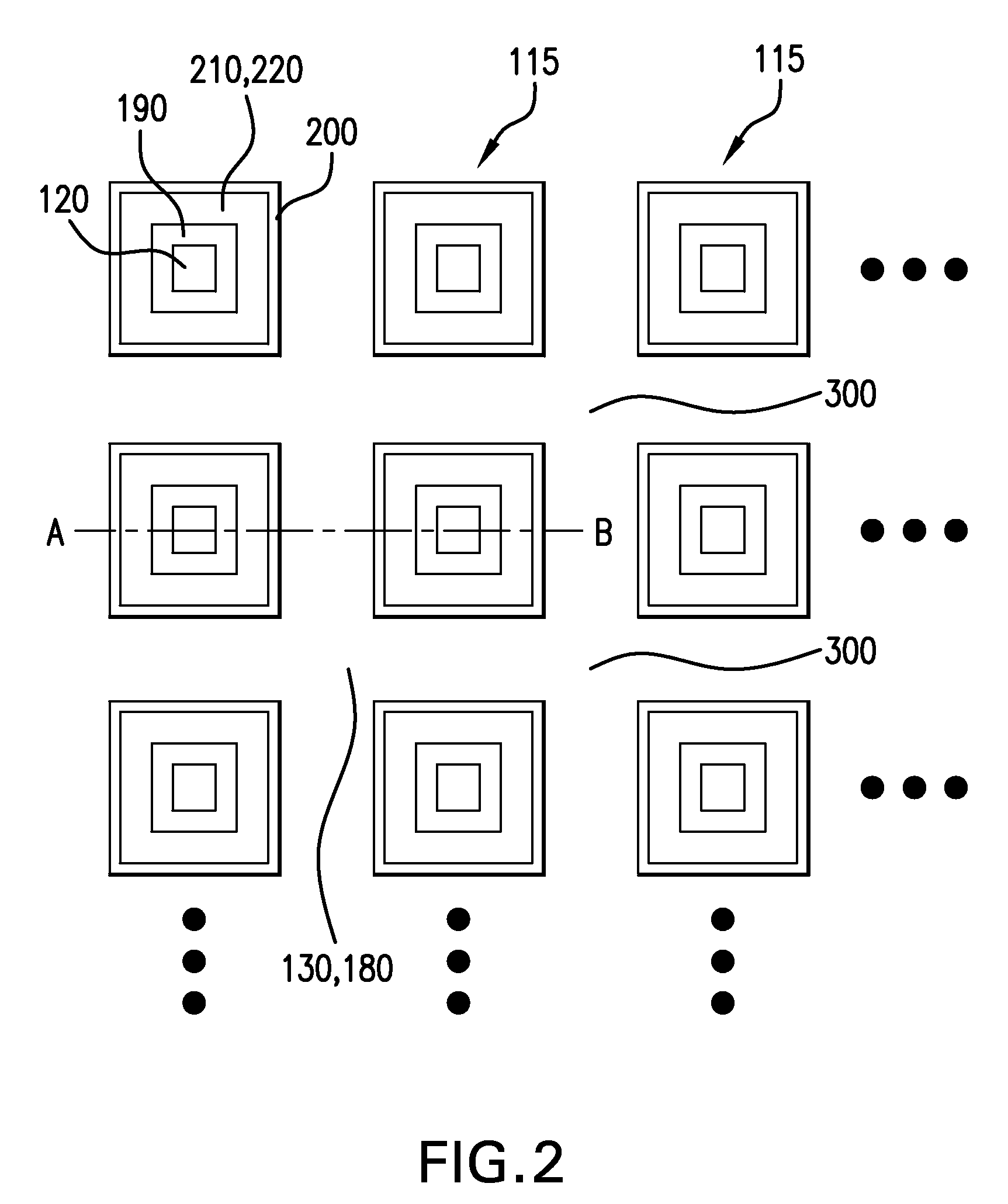Photovoltaic Thin-Film Solar Cell and Method Of Making The Same
a technology of solar cells and thin films, applied in the field of photovoltaic thin film solar cells and methods of making the same, can solve the problems of increased detrimental effects of defects, and achieve the effects of improving the performance of thin film pv cells, increasing the resistance of substrates, and high efficiency
- Summary
- Abstract
- Description
- Claims
- Application Information
AI Technical Summary
Benefits of technology
Problems solved by technology
Method used
Image
Examples
Embodiment Construction
[0017]Referring to FIGS. 1 and 1a, a photovoltaic device 100 having a front and back orientation is shown schematically. The device 100 comprises a crystalline substrate 101 having a resistivity greater than about 0.02 ohm-cm. Over the substrate 101 is an epitaxy, thin-film layer 102. The thin-film layer 102 contacts the substrate in at least one region 104 to define a p-n junction 104a. To harness the electrical energy generated by the PV cell, front ohmic contacts 107 are electrically connected to the front of the cell 100, while a back ohmic contact 110 is electrically connected to the back. These elements are considered in detail below.
[0018]The substrate 101 has several important functions. First, it provides physical support for the thin-film layer 102. It may be the sole support for the thin-film layer or it may be used in combination with another substrate such a metal or ceramic layer to provide additionally rigidity. The substrate also forms the p-n junction 104a with the ...
PUM
 Login to View More
Login to View More Abstract
Description
Claims
Application Information
 Login to View More
Login to View More - R&D
- Intellectual Property
- Life Sciences
- Materials
- Tech Scout
- Unparalleled Data Quality
- Higher Quality Content
- 60% Fewer Hallucinations
Browse by: Latest US Patents, China's latest patents, Technical Efficacy Thesaurus, Application Domain, Technology Topic, Popular Technical Reports.
© 2025 PatSnap. All rights reserved.Legal|Privacy policy|Modern Slavery Act Transparency Statement|Sitemap|About US| Contact US: help@patsnap.com



